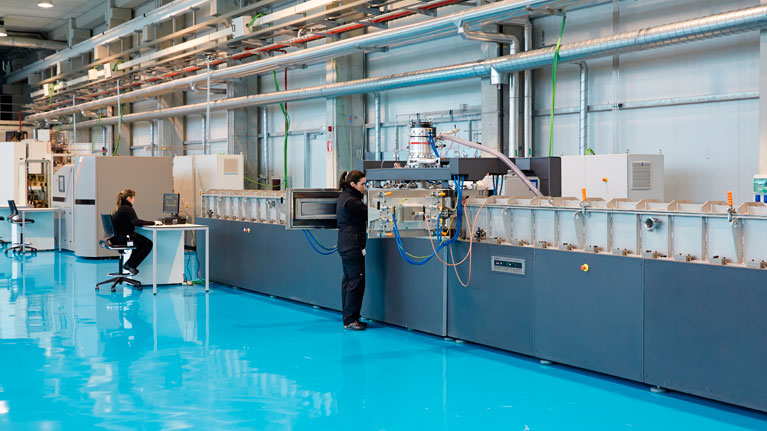10 years of R&D focused on coatings at CSP
IK4-TEKNIKER is nowadays a company of reference in terms of research applied to the concentrated solar power sector.

CSP (Concentrated Solar Power) uses mirrors or lenses to reflect sunlight on a small surface. Firstly, this concentrated sunlight is transformed into heat and, secondly, into electricity by a thermal motor so it can be fed into our facilities.
Nowadays, there are several types of technologies in use at CSP plants: parabolic discs, Stirling dishes, fresnel and tower solar power stations. Over the last decade, the development of these technologies has been supported by a progressive cost reduction which has made it possible to increase generation capacity and offer a source with major development prospects.
In this context, IK4-TEKNIKER stands out as a reference in the field of applied research. Mention must be made, for instance, of the development of advanced coatings. At concentrated solar power plants, elements such as receivers, that absorb and transfer solar power to a heat carrying fluid, must be fitted with a selective coating (low infrared emissivity and high visible spectrum absorptivity) to collect and contain solar radiation efficiently.
In recent years, and as a result of the work carried out research centres, progress has been made in terms of coating design to achieve reliable operation at higher temperatures and improve system efficiency.
The first major landmark for IK4-TEKNIKER in this field arrived under the CENIT ConSOLi+Da project. Through this cooperation, that began in 2006 and was led by the multinational corporation Abengoa, the technology centre researched several technologies for concentrated solar power plants ranging from cylindrical-parabolic collectors to Stirling discs.
So far, cylindrical-parabolic power plants have dominated the CSP market. Systems of this kind use cylindrical mirrors to concentrate a large amount of sunlight on a receiver that is layed along the reflector´s focal line and produces a radiation concentration which is equivalent to 80 suns.
IK4-TEKNIKER designed a coating for these receptor pipes. The end result of the project was an absorption coating of several layers comprising metals such as alumina and molybdenum applied evenly on pipes measuring half a metre in length. The coating allowed the entire solar spectrum to be absorbed, i.e., ultraviolet and infrared radiation. The new solution also presented low thermal emissivity levels, which explains why energy losses were reduced.
To achieve this final objective, IK4-TEKNIKER turned to its long-standing expertise in the field off Physical Vapour Deposition techniques (PVD). It is a sustainable technology that vaporises an extremely thin layer of metal on a surface to build in new functions. Based on this expertise, the organisation opened up a new line of development that included the following: know-how for evaporation using reactive sputtering and feedback gas control (a method used to deposit thin layers of material on a surface), optical characterisation of coatings within a range of 300 to 2500 nm and optical design of multi-layer coatings.
The next major IK4-TEKNIKER project in this field was connected to the development of absorbing coatings adapted to the specificities of new collector designs supplied by the engineering firm Aries. All work was carried out under the European project HITECO and served as a pretext to make further progress in terms of design and to optimise absorptivity and emissitivity capabilities in materials.
In addition, a Physical Vapour Deposition system (PVD) was built allowing coatings to be applied to real receptor pipes measuring four metres in length. The development was tested successfully on collectors installed at the pilot plant that ENEA owns in Casaccia, Italy.
The technology centre is currently involved in the European IN-POWER project together with the industrial division of the OHL Corporate Group. The challenge of developing solar thermal power plants that operate more efficiently is focused on increasing operating temperatures above the current 400ºC setting. Selective coatings that are currently available, however, degrade at such high temperatures should it not be possible to guarantee vacuum operation.
This project, on the one hand, aims to develop absorbers that can operate at a maximum temperature of 600ºC and are compatible for use with salts as a heat-carrying fluid. And, on the other, to deal with the challenge connected to designing systems that lengthen the service life of medium-high (550ºC maximum) absorbing coatings without having to resort to a protective vacuum. In this manner, coatings will be exposed to the atmosphere and manufacturing costs for receptors will be cut back significantly.
Javier Barriga
Josu Goikoetxea
Unit of Surface Physics and Materials IK4-TEKNIKER
